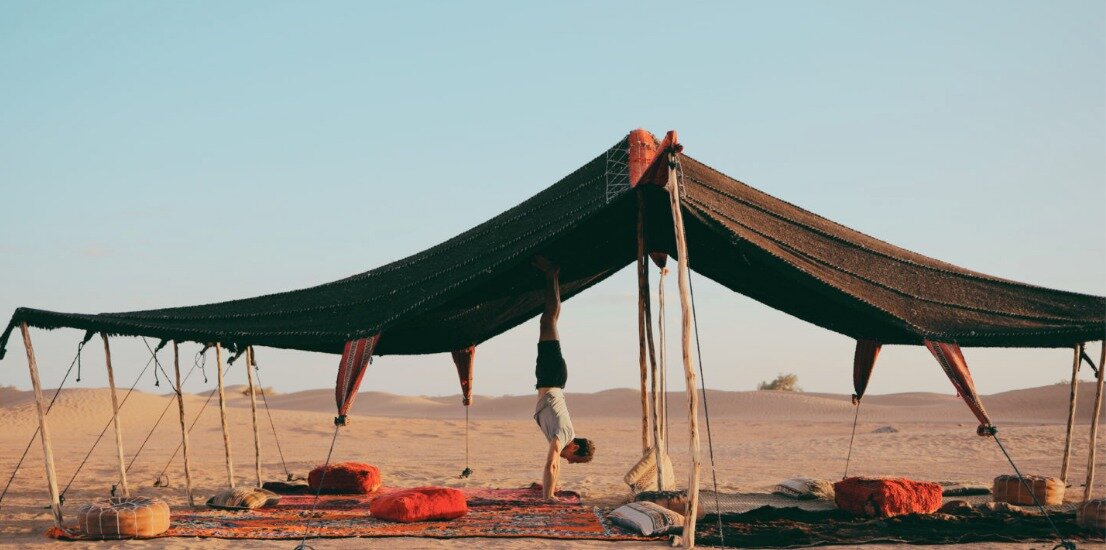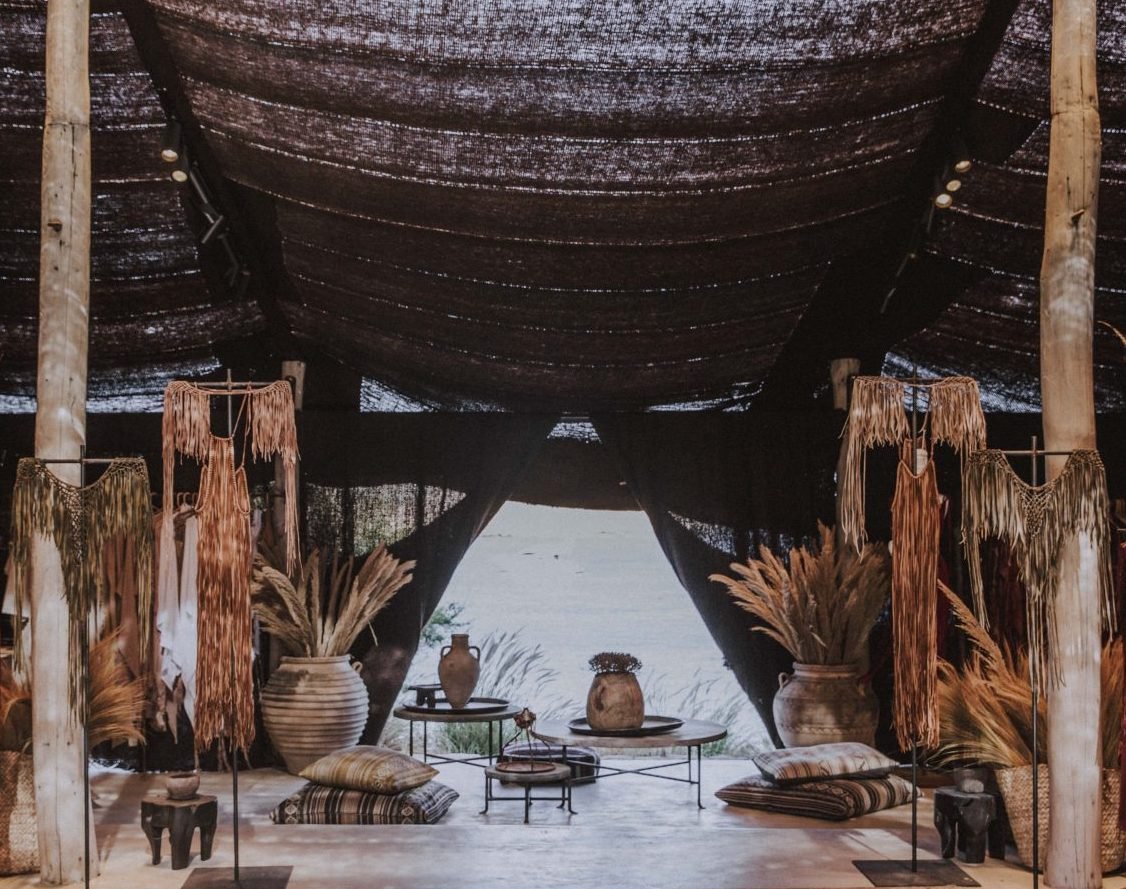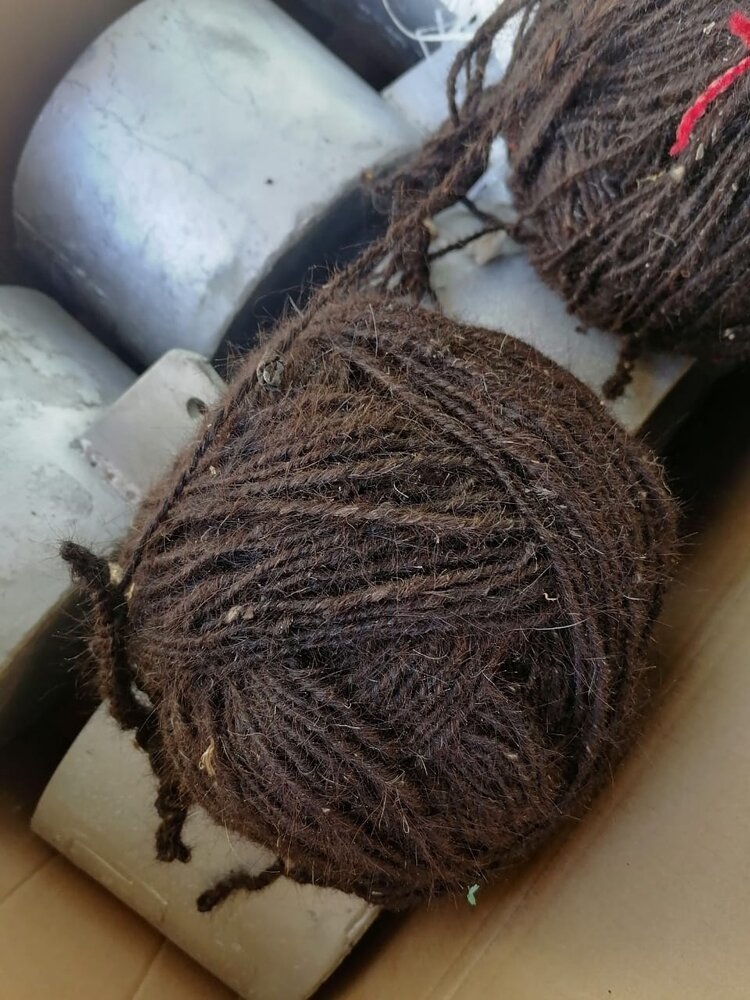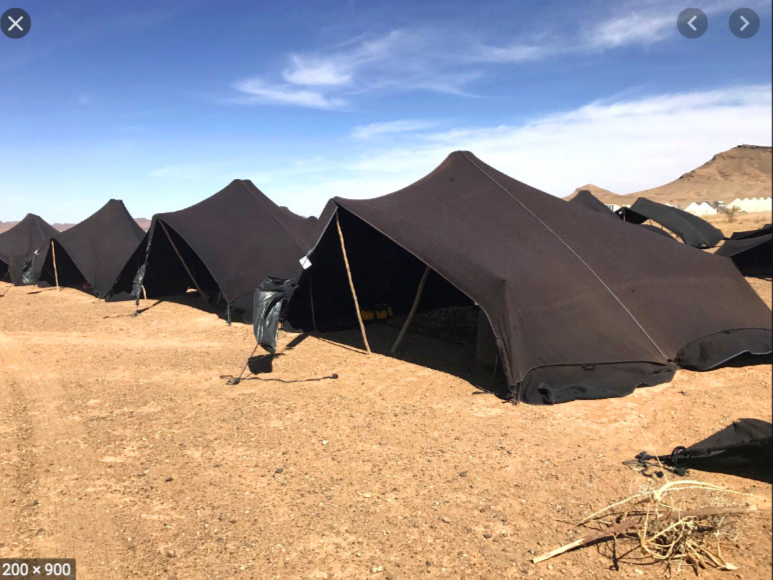Traditional Handcrafted Bedouin Tents in Camel & Goat Hair
Our handcrafted Bedouin tents, also known as bivouac or nomad tents, capture the spirit of the Sahara Desert’s nomadic heritage. Woven from camel and goat hair by skilled artisans, each tent is a testament to the enduring tradition of craftsmanship, offering a harmonious blend of durability, comfort, and cultural significance.


Key features of our camel and goat hair tents:
Authentic Design: With their timeless single central poles and wooden Hamar support structure, our tents evoke the true essence of nomadic living, grounded in centuries-old traditions.
Made to Order: Every tent is custom crafted to suit your unique needs, ensuring the perfect fit for your event or outdoor space, whether for a private gathering or an unforgettable experience.
Built to Last: The tightly hand-woven camel and goat hair offers superior insulation, wind protection, and natural climate control, making our tents an ideal refuge even in the harshest of environments.
Sustainable: Grounded in the spirit of supporting local communities and indigenous craftsmanship, each piece is thoughtfully crafted to honor the art of the Moroccan desert. Bringing the raw beauty of this heritage into your space, every tent tells a story of quality, resilience, and sustainable design. Explore our collection and elevate your surroundings with a timeless luxury that transcends time and place.




Who are the Bedouin people ?
The Bedouins are semi-nomadic people whose roots stretch deep across the Middle East and North Africa, migrating with their herds to seasonal pastures. For centuries, their traditional Sahara Nomad Tents—also known as Bedouin or Bivouac Tents—have served as resilient shelters for these wandering communities. Crafted to withstand the harsh desert winds and ever-changing climates, these tents have evolved over generations, embodying the perfect balance of form and function. Their minimalist yet durable design allows for swift assembly and disassembly, reflecting the nomadic way of life that values both practicality and the timeless beauty of tradition.




TENT INSTALLATION
The exterior of these remarkable tents is meticulously handwoven on a loom using camel and goat hair, creating a texture that is as functional as it is beautiful. Supported by hand-carved wooden posts and "Hamar"—banana-shaped wooden supports—these tents are a true testament to the artistry of traditional craftsmanship. The weave itself is designed to adapt to the changing elements: tightening in wet weather to keep the interior dry, and expanding in heat to allow the tent to breathe.
The camel hair wool boasts remarkable thermal properties, acting as a natural heat absorber. Its loose weave not only encourages heat to disperse but also facilitates the release of warmth, ensuring comfort in all seasons. The natural oils in the hair (sebum) offer a unique water-resistant quality, making these tents inherently waterproof. Their adaptability allows them to thrive in diverse environments, from the harshest deserts to the coldest climates.
In extreme conditions, the tents can be crafted with a double-layered roof. In summer, the air gap between the layers provides a cooling effect, while in winter, the layers offer superior thermal insulation, preserving warmth in the coldest of nights.
For more modern applications, such as museum installations or high-end venues like the Sunset Restaurant at Scorpios, the tents can also be made with a sturdy metal frame, maintaining their authentic aesthetic while ensuring structural integrity for long-term use.
What are Bedouin Tents Crafted From?
Bedouin tents are woven using traditional methods passed down through generations, blending camel and goat hair to create a fabric both strong and beautiful. The process begins with 50cm diameter panels, woven by hand on a nomadic loom, each one carefully sewn together to form the desired size. While the tents start with a deep black hue, the sun’s embrace gradually transforms them into a rich, earthy brown, reflecting the passage of time in the desert.
The weaving itself is a sacred craft, predominantly carried out by women on a ground loom. The result is a tightly woven, three-ply textile, known for its strength and durability. This versatile material is used not only for tents but also for camel bags, rugs, and pillows—every piece a testament to the ingenuity and resourcefulness of the Bedouin people.
The wool, collected from their herds, is carefully cleaned, brushed, spun, and then woven, reflecting the deep connection between the tribes and their livestock—essential to their survival. Weaving these textiles is one of the oldest and most cherished crafts, with each tribe passing down its unique designs and techniques, preserving a rich legacy of artistry and tradition.
What is the Traditional Name for a Bedouin Tent?
Bedouin tents are known by many names, each reflecting the rich cultural heritage and nomadic lifestyle of the tribes. They are called bayt al-shar, meaning "house of hair" in Arabic, a nod to the woven camel and goat hair that forms their structure. Often referred to as bivouac tents due to their temporary nature, they are also known as Middle Eastern or Berber tents, depending on the region and tribe. Above all, they are simply called nomad tents, embodying the spirit of a life lived in constant movement, deeply grounded in the traditions of the desert.
The fabric, rich with the texture of handspun camel and goat wool, reveals the natural fibers that form the foundation of a Bedouin tent, each thread woven with care to create a durable, breathable shelter for the desert’s harshest conditions.
A skilled artisan weaves camel and goat hair on a traditional loom, crafting the fabric for a Bedouin tent. Each thread is placed with care, honoring centuries of craftsmanship and tradition, while the earthy tones of the fabric emerge, reflecting the timeless connection to the desert.
The artisan continues her work, her hands expertly guiding the threads on the loom. The fabric takes shape, each weave a testament to her skill and the enduring tradition of Bedouin craftsmanship. The process is both methodical and intimate, a quiet celebration of heritage passed down through generations.
The fabric is laid out on the ground, slowly taking shape as the pieces come together, each panel a step closer to becoming a fully-formed Bedouin tent, ready to shelter and protect from the desert’s ever-changing elements.
Authentic Craftsmanship – The Heart and Soul of Bedouin Tents.
- Timeless Bedouin Ergonomic Design
- Handwoven with care from camel and goat hair by the nomads of the Sahara, in 50cm wide panels
- Crafted with a central pole and Hamar support, reflecting the simplicity and strength of tradition (size- dependent)
- The fabric begins in rich black, gracefully fading to a warm, earthy brown as it embraces the sun’s touch
- Customizable with 20cm diameter wooden posts or metal roof frames for large-scale projects, hotels, festivals, and public spaces
- Structural drawings available from our expert architect to ensure a perfect fit
- Designed for effortless assembly and dismantling, offering versatile mobility
- (SKU# MT05)
Draw inspiration from the timeless beauty of our Bedouin tent designs — where tradition meets elegance in every woven thread.
The future of Bedouin tents — The Nomad Pavilion, a water harvesting sanctuary for arid weather
A conceptual project by Dina Haddadin + Rasem Kamal in the Desert of Jordan, Jordan




The pavilion’s design is inspired by the Black Iris, Jordan’s national flower, known for its resilience in the face of the desert’s dry soil, intense sun, and fierce winds. In a nod to the wild cactus, the pavilion is crafted with overlapping layers, ensuring a cool and comfortable interior, free from the desert heat.
Reflecting the materials used in traditional Bedouin tents, the structure will be enveloped in a living, breathing skin of coarsely woven goat hair, creating a natural and sustainable connection between form and function.
The Nomad Pavilion draws inspiration from the timeless Bedouin tent, one of the earliest forms of shelter designed to endure the harshest of conditions.
Our vision is to reimagine this authentic structure, blending seamlessly with its environment while standing as a sanctuary for visitors. It serves as a shaded oasis, a peaceful gathering space, and a source of fresh, rejuvenating water.
Kindly complete the form below to share your bespoke requirements. Please include as many details as possible, such as your location and timeline, to help us tailor a perfect solution for you.
FAQs
-
Traditionally, Bedouin tents are handwoven from camel hair or goat hair. These materials offer exceptional durability, insulation, and natural climate control, making them ideal for the harsh desert environment.
-
Bedouin tents have several names:
Bayt al-shar: This is the Arabic term for "house of hair."
Bivouac tent: This term emphasizes their temporary use.
Nomad tent: This highlights their association with nomadic lifestyles.
-
Camel and goat hair offer several advantages:
Durability: The tightly woven hair creates a strong and long-lasting material.
Insulation: The hair provides excellent insulation, keeping occupants warm at night and cool during the day.
Natural Climate Control: The breathable material allows for air circulation, preventing condensation and maintaining a comfortable living space.
Water Resistance: The natural hair oils act as a water repellent, providing basic waterproofing.
-
Bedouin tents are remarkably adaptable:
Self-Regulating Climate: The weave expands in hot weather to promote airflow and contracts in cold weather to retain heat.
Double-Layered Roofs (Optional): For extreme climates, we offer tents with double-layered roofs. In summer, an air gap between the layers provides additional cooling. In winter, the double layer provides enhanced thermal insulation.
More beautiful tents you might like.
-

Pole Tents
Heavy cream canvas with a single pole in the middle Available with or without black Moroccan motif
-

Full Frame Tents
Featuring a sturdy metal frame for a clean, open interior, these tents offer a luxurious and versatile space for events of all kinds.
-

Stretch Tents
We offers stunning stretch tents! These versatile, waterproof structures are perfect for creating unique spaces. Explore sizes, colors and get a free quote








































